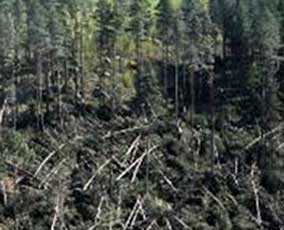Konstfack Degree Exhibition 2014 / Vårutställning 2014



For my piece I have transported storm-felled timber from the west coast to the east coast, and built a wind shelter out of it. The storm-felled timber and my performative act of copying the wind’s journey across our lands, from the west to the east, allows the wind to appear in several layers. The different wind speeds have been systematized in the Beaufort Scale, where the connection between the trees and the wind appear in the foliage and trunks.
If the wind has an inside, it ceases to be immaterial and becomes manifest; you can step in and out of it.
In 1917, Norwegian meteorologists studied the weather along the coast in the hope of being able to predict an attack from the German navy. They discovered the line that separates two air masses with different temperatures and named this phenomenon after the front of soldiers that at any time could form at the horizon. Perhaps in the future we will not protect ourselves from front-line troops, but from the storms created by the on-going climate changes.
I mitt verk har jag transporterat stormfällt virke från väst- till östkusten och byggt ett vindskydd av det. Det stormfällda virket, vindskyddet och den performativa akt jag utför när jag kopierar vindens resa över vårt land, från väst till öst, gör att vinden framträder i flera lager. De olika vindstyrkorna finns systematiserade i beaufort-skalan, där trädens koppling till vind framträder i lövverken och stammarna.
Om vinden har en insida upphör den att vara immateriell och förkroppsligas, du kan träda in och ut ur den.
1917 studerade norska meteorologer vädret längs kusten i hopp om att kunna förutse en attack från den tyska marinen. De upptäckte den gräns som åtskiljer två luftmassor med olika temperatur och döpte fenomenet efter den front av soldater som när som helst skulle kunna tona upp sig vid horisonten. Kanske skyddar vi oss inte i framtiden främst från fronttrupper, utan från de av de pågående klimatförändringarna orsakade stormarna?














